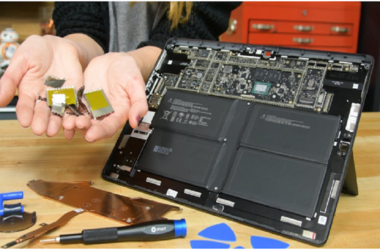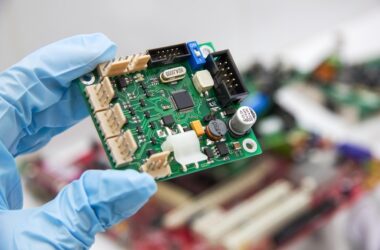Lights, camera, action! The world of cinema has always been known for its breathtaking visuals and captivating storytelling. But what if we told you that there’s a hidden hero behind some of the most magical moments on screen? That’s right – 3D animation. From the lovable characters in Toy Story to the mesmerising landscapes of Avatar, this groundbreaking technology has revolutionised filmmaking as we know it. Join us on an extraordinary journey through time as we explore how 3D animation took Hollywood by storm and forever changed the way movies are made. Get ready to be amazed!
A Brief history of animation and how 3D animation has emerged as a game-changer
Animation has been a part of human culture for centuries. The earliest known form of animation dates back to 5,000 years ago in ancient China, where shadow puppetry was used to tell stories and entertain audiences. Over time, various techniques such as flipbooks, zoetropes, and cel animation were developed to bring still images to life.
In the early 20th century, animated films became popular with the introduction of hand-drawn animation techniques by pioneers like Winsor McCay and Walt Disney. These traditional forms of animation involved drawing each frame by hand and then photographing them at a rapid pace to create the illusion of movement. This labour-intensive process limited the scope for creativity and innovation in storytelling.
However, with advancements in technology, animation started evolving into new dimensions. In the 1990s, computer-generated imagery (CGI) began to emerge in animated films like “Toy Story” (1995), marking a significant shift in the animation industry.
The Emergence of 3D Animation
The term “3D” refers to three-dimensional space or objects that have depth and can be viewed from different angles. It is achieved using computer graphics technology that creates realistic-looking animations with depth perception.
Pixar’s “Toy Story,” released in 1995, was not only the first feature-length film entirely created using CGI but also marked the beginning of a new era in filmmaking – one where imagination could be brought to life without limitations.
With 3D animation, filmmakers could easily manipulate objects and characters in a virtual environment, making the storytelling process more efficient and versatile. It also opened up new possibilities in terms of visual effects, allowing for more immersive and realistic worlds to be created on screen.
The Impact of 3D Animation
The emergence of 3D animation has had a significant impact on the animation industry. It has not only transformed the way stories are told but has also expanded the reach of animated films to wider audiences. The success of animated blockbusters like “Shrek” (2001), “Frozen” (2013), and “The Incredibles” (2004) has shown that 3D animation is not just for children but can appeal to all ages.
Moreover, with advancements in technology, 3D animation techniques have become more accessible and affordable. This has led to an increase in the production of animated content across various platforms like television, video games, advertising, and social media.
The Early Days of 3D Animation: A look at the first 3D animated films and their impact on the industry
The early days of 3D animation marked a major shift in the world of filmmaking and entertainment. It was a time when technology and creativity came together to create something truly groundbreaking – the first 3D animated films.
Before we dive into the first 3D animated films, it’s important to understand how this revolutionary technology came into existence. The roots of 3D animation can be traced back to the mid-20th century when computer graphics were used for scientific research and military simulations. However, it wasn’t until the late 1970s that significant advancements were made in computer technology that allowed for more complex graphics and animations.
In 1979, a team at Lucasfilm’s computer division (later known as Pixar) produced “The Adventures of Andre and Wally B,” a short film that utilised primitive CGI techniques to bring its characters to life. This was followed by other short films such as “Luxo Jr.” (1986) and “Red’s Dream” (1987), which further showcased the potential of 3D animation.
However, it wasn’t until 1995 that the world was introduced to the first feature-length 3D animated film – “Toy Story.” Produced by Pixar Animation Studios in collaboration with Disney, this film changed everything. It not only became a worldwide box office success but also received critical acclaim for its storytelling, humour, and groundbreaking use of computer-generated imagery.
“Toy Story” paved the way for other studios to jump on board.
Advancements in Technology: How advancements in technology have contributed to the growth of 3D animation in film
Over the years, technology has played a crucial role in transforming the world of filmmaking. Perhaps one of the most significant advancements in this field is the development and growth of 3D animation. From its humble beginnings with Pixar’s Toy Story in 1995 to James Cameron’s Avatar in 2009, 3D animation has revolutionised the way stories are told on screen.
So how exactly have advancements in technology contributed to this growth? Let’s explore some key aspects:
1. Rendering Power: One of the primary reasons for the rise of 3D animation in films is the increase in rendering power. In simpler terms, rendering refers to the process of creating an image from a 2D or 3D model by calculating its colour and lighting effects based on various parameters such as texture, shadows, reflections, and more. With technological advancements, computers can now render complex scenes at a much faster rate than ever before. This means that filmmakers can create highly detailed and realistic animations without worrying about long production times.
2. Realistic Visuals: Another crucial aspect that has contributed to the growth of 3D animation is its ability to create highly realistic visuals. With advancements in technology such as motion capture and virtual reality, animators can now capture real-life movements and translate them into their animations seamlessly. This level of detail and realism was not possible with traditional hand-drawn animation techniques and adds a whole new dimension to storytelling.
3. More Creative Control: In traditional hand-drawn animation, each frame had to be created manually, which limited the creative control of animators. With 3D animation, filmmakers can now manipulate every aspect of their animations with ease, giving them more control over the final product. This includes everything from character movements and expressions to camera angles and lighting effects.
4. Cost-Effective: Advancements in technology have also made 3D animation more cost-effective than ever before. In the early days of 3D animation, the costs associated with software and hardware were a significant barrier for many filmmakers. However, with the development of more accessible and user-friendly software, as well as advancements in computer processing power, creating 3D animations has become much more affordable.
5. Accessibility: Another factor that has contributed to the growth of 3D animation is its accessibility. With the rise of online tutorials and courses, anyone with a computer and an internet connection can learn how to create 3D animations. This has opened up opportunities for aspiring animators who may not have access to traditional art schools or expensive software programs.
6. Integration with Live-Action: As technology continues to advance, filmmakers are finding new ways to integrate live-action footage with 3D animation seamlessly. This allows for a blending of real-life environments and characters with animated elements, creating a visually stunning experience for audiences.
The Rise of CGI: Exploring how CGI (computer-generated imagery) has become an essential element in modern filmmaking
CGI (computer-generated imagery) has revolutionised the world of filmmaking, transforming the way movies are made and experienced by audiences. In this section, we will explore the rise of CGI and its impact on modern filmmaking.
1. The Origins of CGI in Film
The use of computer-generated imagery in film can be traced back to the 1970s, when computer graphics were first used to enhance special effects in movies such as Star Wars and Tron. However, it wasn’t until the late 1980s that CGI truly began to take off with the release of Pixar’s Toy Story in 1995 – the first feature-length film entirely created using CGI.
2. Advancements in Technology
One of the main reasons for the rise of CGI in film is advancements in technology. As computers became more powerful and software became more sophisticated, filmmakers were able to create increasingly realistic and complex visual effects. This allowed them to bring imaginary worlds and creatures to life on screen like never before.
3. Creating New Possibilities
CGI has opened up a whole new realm of possibilities for filmmakers, allowing them to push boundaries and create visuals that would have been impossible using traditional methods. From creating entire cities to bringing mythical creatures to life, CGI has expanded the scope of storytelling in film.
4. Cost-Effective Solution
Another reason for the popularity of CGI is its cost-effectiveness compared to practical effects. While creating elaborate sets or constructing physical models can be expensive, using CGI allows filmmakers to create almost anything they can imagine at a fraction of the cost.
5. Seamless Integration with Live-Action Scenes
One of the biggest challenges for filmmakers using CGI is seamlessly integrating it with live-action footage. However, with advancements in technology and techniques, CGI has become increasingly realistic and seamlessly integrated into live-action scenes. This has allowed for more immersive storytelling and has made it difficult for audiences to differentiate between what is real and what is CGI.
6. Impact on Filmmaking Techniques
The rise of CGI has not only impacted the visual effects in films but also changed how movies are made. Filmmakers now have access to virtual pre-production tools that allow them to plan out shots and sequences before filming even begins. This has helped streamline the production process and allowed for more creative freedom.
7. The Use of Motion Capture
Motion capture, or mocap, is another significant advancement in CGI technology that has had a major impact on filmmaking. This technique involves capturing an actor’s movements and translating them into digital characters, allowing for more realistic and nuanced animation. Mocap has been used extensively in films such as Avatar and The Lord of the Rings trilogy.
8. Integration with 3D Technology
The rise of 3D technology has also played a role in the popularity of CGI in film. By combining CGI with 3D technology, filmmakers have been able to create more immersive and visually stunning experiences for audiences.
9. The Future of CGI
As technology continues to advance, the possibilities for CGI in film are endless. Filmmakers are now able to create entire worlds and characters using only their imagination and a computer, pushing the boundaries of what is possible on screen.






